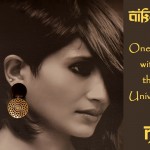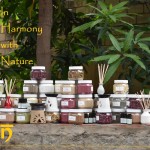Wooden Dolls of Nutangram

West Bengal is one of India's foremost traditional craft producers. One such craft is doll-making. In West Bengal alone dolls are crafted from wood, metal, sponge wood, palm leaf, jute etc. Originally wooden dolls were the sole monopoly of the carpenter community in Bengal. In earlier days, these dolls were made in the districts of Howrah, Bankura, Purulia and West Medinipur but are now restricted to a couple villages in Bardhaman district.
The chief producer of these wooden dolls is a little village known as Nutangram (also spelt as Natungram) in Bardhaman district of West Bengal. This charming village is the home of the famous hand carved wooden dolls of West Bengal. Artisans from this village have been carving and chiseling wood for many years following the main theme of owls, raja-rani and dwarapals which were used for the Lakshmi puja festivals. These talented tribal folk carve out owl and other symbols out of the locally available wood and paint them with painstaking detail and vivid colours. Each figurine is carved from a single cylindrical block of wood. Approximately 60-80 households of this village are engaged in the making of these iconic wooden dolls. A chunk of wood is chopped and shaped according to the size of the item. The craft-making is a family tradition where men do the carving and chiseling while the women paint and add other finishing touches to the figurines. The tools used for this craft are simple - handsaw, hammer, drill and chisel. The raw material used is a soft wood, usually gamar wood, though sometimes mango wood and Meghani wood are also used. Logs are sawn from the nearby forest and brought to the village.
A common family name in Nutangram is 'Bhaskar' which means sculptor. Interestingly another common family name here is 'Sutradhar' or story teller' because the inspirations for most figurines are drawn from mythologies and folklores. For instance, the most famous pencha or owl is an auspicious symbol among people from Bengal, Bihar and Orissa. In ancient mythology the owl is the vahana or carrier of goddess Lakshmi and is always featured beside her in art. Being associated with the goddess of wealth, Lakshmi, the owl itself came to be seen as a symbol of prosperity.
Nutangram has its own community museum that has been constructed by West Bengal Cotton Village & Industries Board as part of a Department of Micro, Small and Medium Enterprises & Textiles, Government of West Bengal and UNESCO Initiative. Every January the artist community organises a festival known as Wooden Doll Festival to showcase their craft.
The figurines made in Natungram feature in many urban households as collectable pieces and decorative show pieces. In recent years, innovative designers have used the figurines to create stools, lampshades and other household items. Natsy by Design brings you a fresh new avatar of these wooden figurines as they have been set in jewellery pieces for the first time. All the elements used in this range of jewellery like the supli, the pulo, the kunki (or rice measurement cup), the owl, the shankh/conch shell symbolises the ushering in of well-being, happiness and prosperity. Now available at http://natsybydesign.com/jewellery/indo-western-jewellery.





-150x150w.jpg)
Leave a Comment